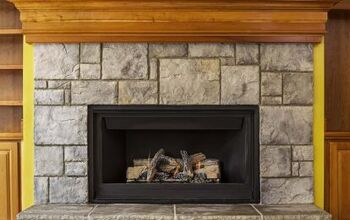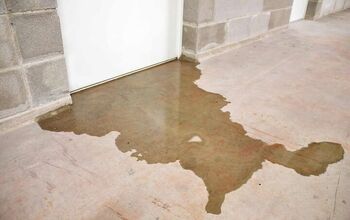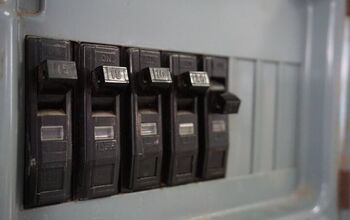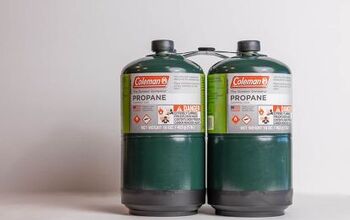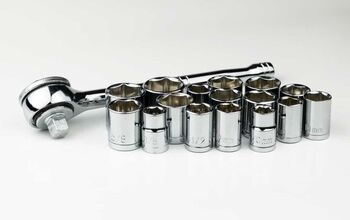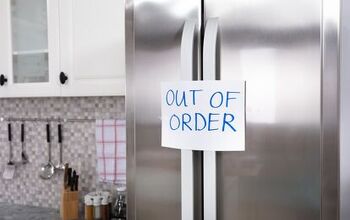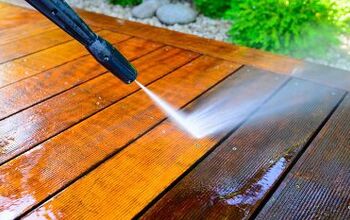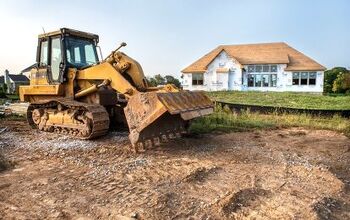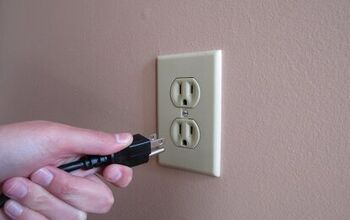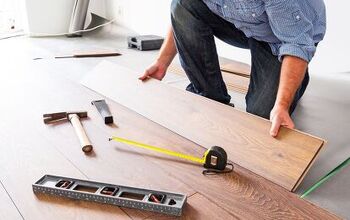No Water Pressure After Turning Water Back On? (We Have A Fix)

You had a small plumbing repair to make, such as a broken supply valve under a sink. You followed all the guides and turned off the main water supply valve. With the repair complete, you opened the main valve. Now there is no water pressure at the sink where the site of the repair.
Why don’t I have water pressure after turning the water back on? More than likely, you have air in the water lines, and this is causing the problem. Air in your water lines can cause several problems, such as:
- Irregular or low water flow
- Vibration in your pipes
- Sputtering of water at the faucets
There can be other causes for a loss of water pressure or water flow after you have closed and reopened the main water valve of your home. These usually involve some mechanical failure somewhere in the system and should be diagnoses and repaired promptly. Determining the cause of your water problem is the first and most important goal.
Related Content: Ball Valve Leaking Internally? | How Do I Know If My Water Pressure Regulator Is Bad? | How To Adjust A Water Pressure Regulator | Is Your Main Water Shut-Off Valve Stuck?
Do You Need to Hire a Plumber?
Get free, zero-commitment quotes from plumbers near you.

Getting the Water Back On – More than Turning a Valve
Believe it or not, there is a proper way to turn on the water at the main valve to your home. Getting the water back into your home without causing problems is a relatively easy process. Following a few steps can prevent a lot of frustration and anxiety.
Step 1 – Turn on Any Valves You Have Repaired
If you have repaired or replaced the valve in a line supplying a sink or toilet, be sure that the new valve is in the fully on position. While you have the water turned off at the main valve, check the other supply valves. Turning these small valves under sinks and toilets is a good idea to keep them free and working easily.
Still got leaks? This article could help if you still have leaks after repairing a faucet.
Step 2 – Open All the Hot and Cold Water Faucets
Opening all the faucets in the house allows the maximum amount of water to flow through the pipes. Air tends to accumulate at the high spots in the plumbing system. In many homes, this is the faucet. Allowing water to flow freely through the system will help remove this air and prevent flow problems.
Be sure that all the drains are open. You certainly don’t want to cause more problems with an inadvertent flood.
It is also a good idea to let the water run for a bit. Remember that water heaters may have accumulated air as well. Allow any water heaters time to refill completely. If you are having other problems with your water heater, check out this article for tips and solutions.
Step 3 – With the Water Running, Flush the Toilets
The water lines feeding your toilets can airlock as well. With the water running at all the faucets, flush the toilets and let the tanks completely refill.
Step 4 – Start Closing the Faucets
Begin at the lowest point in the system. Shutting the faucets off and working your way up the system to the highest point allows any trapped air to escape.
Video: Fixing the Low Water Pressure
I Still Have No or Very Little Water Flow
If you have followed the steps for turning the water back on and you still have water flow problems, there are other issues. There are two usual culprits behind this situation.
- The main water valve
- The water meter
The Main Valve – A Common Cause of Problems
The main water supply valve can be a common source of problems with water flow issues in your home. Problems with these valves are especially true in older homes where the main water supply valve may go years or decades without being used. Could it be stuck? Depending on the type of valve, different problems can occur.
Ball Valves – Simple and Dependable
The most common valve found on the main water supply is ball valves. As the name implies, a ball valve has a ball inside the valve body that turns. A hole through the ball lines up with the pipes on either side to allow water to flow.
Ball valves are extremely reliable. However, some problems can affect their operation.
- Debris can jam the ball, preventing it from opening or closing fully.
- Corrosion can cause the ball from rotating
- The stem connection the ball to the handle can detach, making the valve inoperable.
Checking a Ball Valve
Ball valves come in two styles, stopped and unstopped. Stopped ball valves can only rotate a quarter turn. Usually, when the ball is in the open position, the handle lines up with the pipes connected to the valve. In the off position, the valve handle sits crossways with the pipes.
Unstopped Ball Valves
Unstopped ball valves can turn in either direction. It is not uncommon for the valve on the water supply to your home to be an unstopped ball valve. Many times, these valves are in a meter box below ground and require a water key to turn.
The secret to operating an unstopped ball valve it the position of the water key when it is on the valve. To get maximum flow, the handle of the water key must be perfectly in line with the water pipes on the valve. Otherwise, the valve is only partially open and can restrict the water flow, but what happens when the ball valve is leaking internally?
Give the Valve a Workout
If a ball valve won’t open or close fully, there is probably an obstruction in the valve. Carefully working the valve open and closed can sometimes allow these obstructions to pass through the valve and the water flow will be back to normal.
What if Nothing Happens at All?
If the ball valve handle simply spins with no resistance, the valve is broken and needs replacing. IF the valve is the main water supply valve for your home, this is beyond the scope of most do-it-yourselfers. Contact a licensed plumber who can work with the water department to get this repair accomplished.
Gate Valves – A More Complicated Situation
Some older homes may have a gate valve. Gate valves work by moving a gate up and down inside the valve housing. The gate interrupts the flow of water through the pipe. Gate valves can suffer from the same sorts of problems as ball valves.
The Most Common Problem – Obstructions
Gate valves can become obstructed by debris that prevents the gate from going up and down as the handle turns. If opening and closing the valve repeatedly doesn’t clear the obstruction, the valve may need replacing.
Broken Stems and Detached Gates
Gate valves are also subject to mechanical failures. Most often, this results in a gate detached from the stem. In some instances, the gate can fall into a closed position where it won’t reopen. In rare instances, the gate may remain in the open position and be unable to close. Wither case requires the replacement of the gate valve.
Again, replacing any valve on your main water supply requires the service of a licensed plumber. The plumber will coordinate with the water department to shut off the water further upstream.
Water Meter Problems – Fortunately Not Your Problem
If the problem turns out to be with the water meter itself, you are probably off the hook for the repair. The water meter belongs to the company that supplies your water and any problems with the meter are theirs. There are several problems associated with residential water meters.
- Mechanical failures
- Blockages
- Water leaks
Unfortunately, diagnosing a problem with a water meter is also not your worry. You should never do anything to the water meter yourself. Report any problems with the meter to the water authority. They should respond promptly to check out the issues.
The water authority will often want to make sure that there is no problem on your side of the meter before they take any action to replace or repair a water meter. Don’t be alarmed if the water company representative wants to inspect your plumbing system.
Do You Need to Hire a Plumber?
Get free, zero-commitment quotes from plumbers near you.

Getting the Water Flowing
We hope that this article has helped you understand and diagnose the problems with no water flow in your home after turning the water back on at the main. The most common problem is air in the pipes. The simple steps provided should solve that problem quickly. Good luck and good plumbing.
Related Concerns Dealing With Low Water Pressure

Dennis is a retired firefighter with an extensive background in construction, home improvement, and remodeling. He worked in the trades part-time while serving as an active firefighter. On his retirement, he started a remodeling and home repair business, which he ran for several years.
More by Dennis Howard



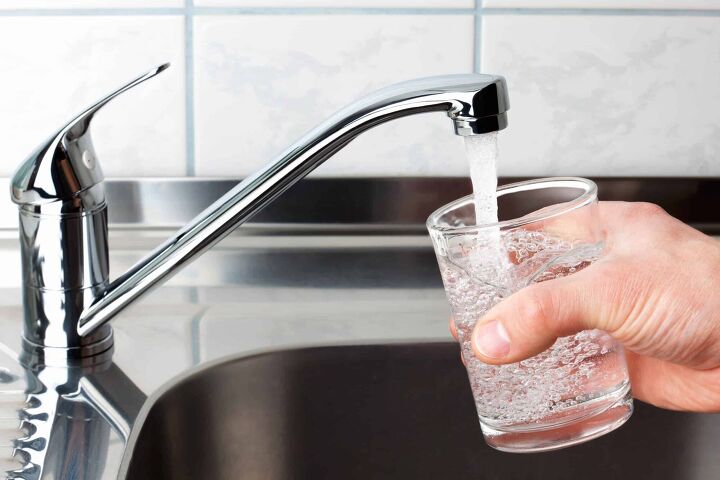






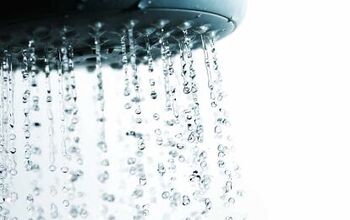
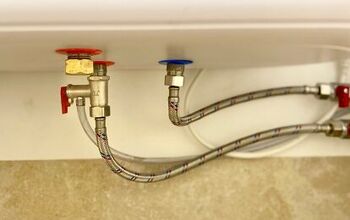
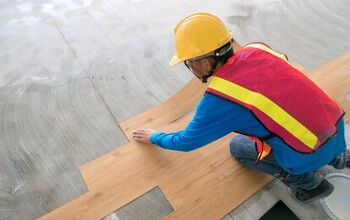
![The 10 Best Table Saws - [2022 Reviews & Buyer's Guide]](https://cdn-fastly.upgradedhome.com/media/2023/07/31/9070645/the-10-best-table-saws-2022-reviews-buyer-s-guide.jpg?size=350x220)


